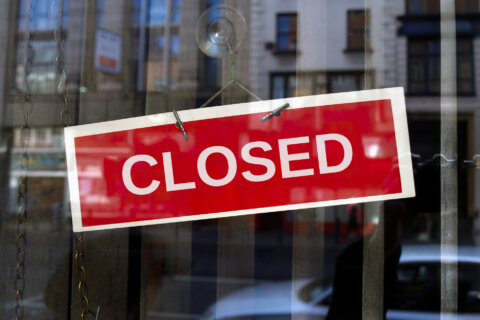Fall and winter holidays are perfect for creating an elaborate outdoor scene — whether you’re planning to recreate “Frankenstein” in your front yard, light up the walkways for Diwali or feature Santa Claus and his reindeer on your roof. Regardless of which holiday you prefer to go all out for, the potential to spread extra holiday cheer to neighbors, family and friends draws many to decor and home improvement stores.
You’re certainly not alone. For companies that design and install holiday decorations, like Neave Group Outdoor Solutions, which operates in parts of New York and Connecticut, requests for holiday setups come in earlier and earlier each year, says Glen Baisley, marketing and customer service director for Neave Group. Clients call about Christmas decorations as early as spring and will lock in plans in July or August, and the number people looking to decorate for other holidays is growing. “In the last number of years, it’s steadily increasing for Halloween decor,” he says.
But not everyone is always a fan of your style of exterior decorating. After you’ve gone all out creating a winter paradise or turning your lawn into a haunted graveyard, can you be forced to take down your decorations?
[Read: 8 Neighborhood Amenities to Look For, Even If You Don’t Use Them.]
Here’s what you need to know about your rights for decorating your property and the situations where you can find yourself limited in your holiday decor.
Your Property, Your Holiday Wonderland
For a property that isn’t tied to a homeowners association — meaning you don’t pay dues to a neighborhood entity that manages the utilities, services or common areas nearby — you don’t have to be concerned about breaking many rules. In that case, your decorations are a part of your First Amendment rights and are considered free speech.
Just like yelling “fire” in a crowded theater, there are limits to what the First Amendment protects, of course. If you create a particularly gruesome Halloween scene in your front yard, complete with the “Frankenstein” monster’s latest victim, which you label as your neighbor Bob down the street, your decision to name someone you know may be considered a threat or intimidation, which can be prosecuted.
Even if you keep your gory Halloween decorations general, a lifelike and bloody scene may lead the police to knock on your door at least once to ensure no crime has been committed, following calls from concerned passersby.
In 2017, the Greene County Sheriff’s Department in Tennessee posted a photo on Facebook of a local resident’s decorations depicting a dummy that appeared to have been crushed by a garage door — fake blood and all. The Facebook post lightheartedly instructed passersby not to call 911 over the sight, making it clear the situation was not a crime scene.
Holiday lights that blink or shine brightly can also be subject to local ordinances. If you create too much light pollution, you may need to turn the lights off after a certain time to avoid disturbing the neighbors. These rules can vary by city, county or township, so be sure to check with local laws if your bright displays light up the whole street.
Violation of a local ordinance on light pollution, sounds or even potentially disturbing the peace for a gruesome scene that leads to multiple 911 calls could result in a simple warning to correct it, but you may also be left with a ticket and fine to pay.
Even if your decorations are ultimately all in good fun, it may be best to rethink them if it means you’ll have to prove you haven’t committed any nefarious deeds. Plus, if your decorations leave others concerned that someone has been murdered in your yard or excessive blinking lights keep the rest of your block awake at night, you may not be scoring any good-neighbor points. It may be worth taming the display to remain on good terms with others in the neighborhood.
[See: 8 Cold-Weather Hacks for Keeping a Cozy Home.]
Enter the HOA
If you own a condo or house that’s part of an HOA, however, you’ve agreed to abide by the rules established by the board, which may include limits to the type of exterior decorating you can do, which holidays permit decorations and how long they can stay up.
Every HOA differs in its preferences, though it’s common for an association to establish rules about the amount of time following the holiday that decorations can stay up and prohibitions of decor that may offend neighbors or the general public, explains Linda Wildman, partner, principal and vice president for IKO Community Management, based in Olney, Maryland.
“Each community has different rules and regulations that oversee that process,” Wildman says.
Strings of lights may be restricted to white or yellow only, or the HOA may prohibit inflatable lawn decorations. Many HOAs are strictest about ensuring holiday decorations come down within 20 days of the holiday, for example.
In Neave Group’s work to design and install holiday decorations, among other outdoor contracting work the company does, many clients are the HOAs themselves. The company will often work with HOAs to decorate a neighborhood’s common areas, which makes it easy to define the association’s preferences and restrictions when determining the needs of the project.
For individuals who want an outdoor setup but live under an HOA, “we’ll do our homework to know what’s allowed and what’s not allowed,” Baisley says.
Wildman says it’s also up to the HOA’s board to determine how frequently and strictly a neighborhood is inspected for violations, including for holiday decorations. Depending on your association, residents may need to report perceived violations to the board. In other associations, a community management company may inspect for violations as part of its regular duties.
Normally, that enforcement comes in the form of sending a letter with photographic evidence of the HOA violation. “We’ll take the picture and send the letter before we’ve even passed the house, by email or text,” she says. Typically, violations are a result of being unaware of the rules, and it’s simply a matter of correcting the error.
[See: 13 Things to Know About Selling Your Home in Fall and Winter.]
How to Make Everyone Happy
HOA or not, the best way to put up a holiday display you’re happy with and your neighbors won’t balk at it is to talk to them ahead of time to gauge their reaction. You may find the couple next door loves the idea of a festive Thanksgiving pumpkin patch display on your lawn, or the family across the street is all for you setting up a haunted house, with the request that nothing gives the kids nightmares.
A classic look for the holiday is most likely to guarantee a favorable reaction from neighbors, and that doesn’t mean you have to stifle your creativity. Baisley says Neave Group steers away from Halloween decorations that are “really scary or gory” to avoid negative reactions, but a spider web display it installed on a townhouse last year, complete with giant spiders and mannequins trapped in the webs, received rave reviews throughout the neighborhood.
Talking your plans over with neighbors can not only be a great way to avoid bothering or offending anyone, but it can also inspire others to get in on the holiday cheer. Your decorations will appear even more festive with other houses on the block getting excited about the season as well.
More from U.S. News
9 Items to Never Leave Outside Your House
8 Things You Shouldn’t Keep in Your Basement or Garage
Can Your HOA Regulate Your Holiday Decor? originally appeared on usnews.com







